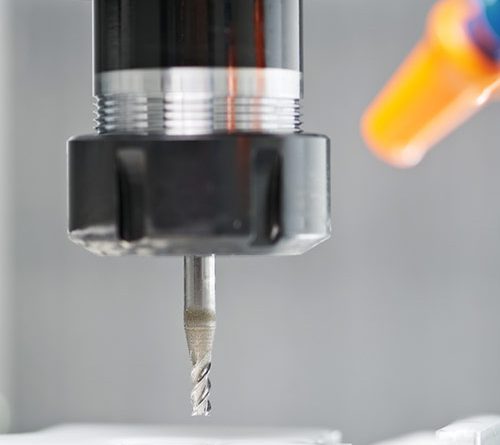How does machining plastics work?
The plastic machining process starts from 3D files used to operate the machining center. This device will machine directly in a plastic block, in order to shape the part in 3D. After the completion of the production, the part receives surface treatments and is submitted to the quality control before to be delivered to the client.
Fabrication equipment required for plastic machining
Regarding the equipment to ensure the production, Prototech Asia has 5 machining centers and 1 CNC Lathe. Thanks to them, we can run multiple projects simultaneously and handle relatively large productions. We also possess a warehouse to store parts in case they should not arrive before a certain date.
Once the production is completed, we use tools such as calipers and micrometers for quality control to check elements such as dimensions and shore degrees. Additionally, we have various accessories to achieve elaborate finishing. For instance, we own a paint booth to apply glossy paint and soft-touch finishing and we are able to paint parts with any Pantone and RAL color standards.
Equipment to run machining centers
Concerning our hardware and software systems, we own the necessary elements ( CAD, Autodesk….) to operate the machines and we can read industrial and design formats ( stp, step, igs, stl, dwg…).
Technics used in prototyping machining
Several technics are used in CNC to obtain specific shapes (learn more on how does CNC machining work?). Each technic employs its own production process and kind of machines. For instance, 5 Axis Machining enables to cut on five sides and is used for machined parts with complex geometries. Some production methods are:
- Prototype turning (CNC lathe machines or Turning centers): it is one of the less complex machining processes. The cutting tool moves according to a movement parallel to the axis of rotation while the plastic part rotates.
- Prototype milling (milling centers): CNC milling works with a rotary movement, either vertical or horizontal of a milling cutter such as an endmill.
- Drilling: Drilling is usually used for metals and wood and works according to a hammering action of the drill bit against the wall of the part.
Tips for your machining plastic parts
Firstly, it is important to check the 3D files. Their analysis will provide information about the feasibility of the project and the cost. In order to reduce the latter and optimize the production, the geometry might be tailored to manufacture abilities. Indeed, it may occur that areas on a 3D file are not feasible in reality nor that some assembly of components on this very 3D may actually be operated in the real world. Additionally, some areas of the parts on a drawing may not be necessary for reality. Therefore drafts and undercuts are an important elements to take into consideration during the design phase, as they may have either a positive or a negative impact.
Secondly, other elements regarding CNC machined parts include the material, as the price is different from one to another. The same constraints apply to properties as material offers different mechanical and chemical characteristics. Not only materials have different properties, but some applications are not doable with every material neither in all technologies. Hinges, for instance, are usually done in vacuum casting and PU PP and not in CNC machining.
To read more about CNC plastic machining please see related articles :


Comments (4)
Hi, I require 2 to 5 pieces but my design show several undercuts, as I cannot change it, what do you advise for production?
Dear Sam,
Thank you for your question,
We will simply change the technology to produce by vacuum casting molding. We require analyzing the 3D file before confirming production.
Many thanks in advance,
The Prototech Team
Greetings! I do require a specific finishing for my project; can I send you a sample that you can validate your ability to provide it?
Dear Sir,
Yes if your demand is unique, we will need a sample to study at our workshop. We can then advise you on the finish we can provide you for this project.
Thanks
The Prototech Team